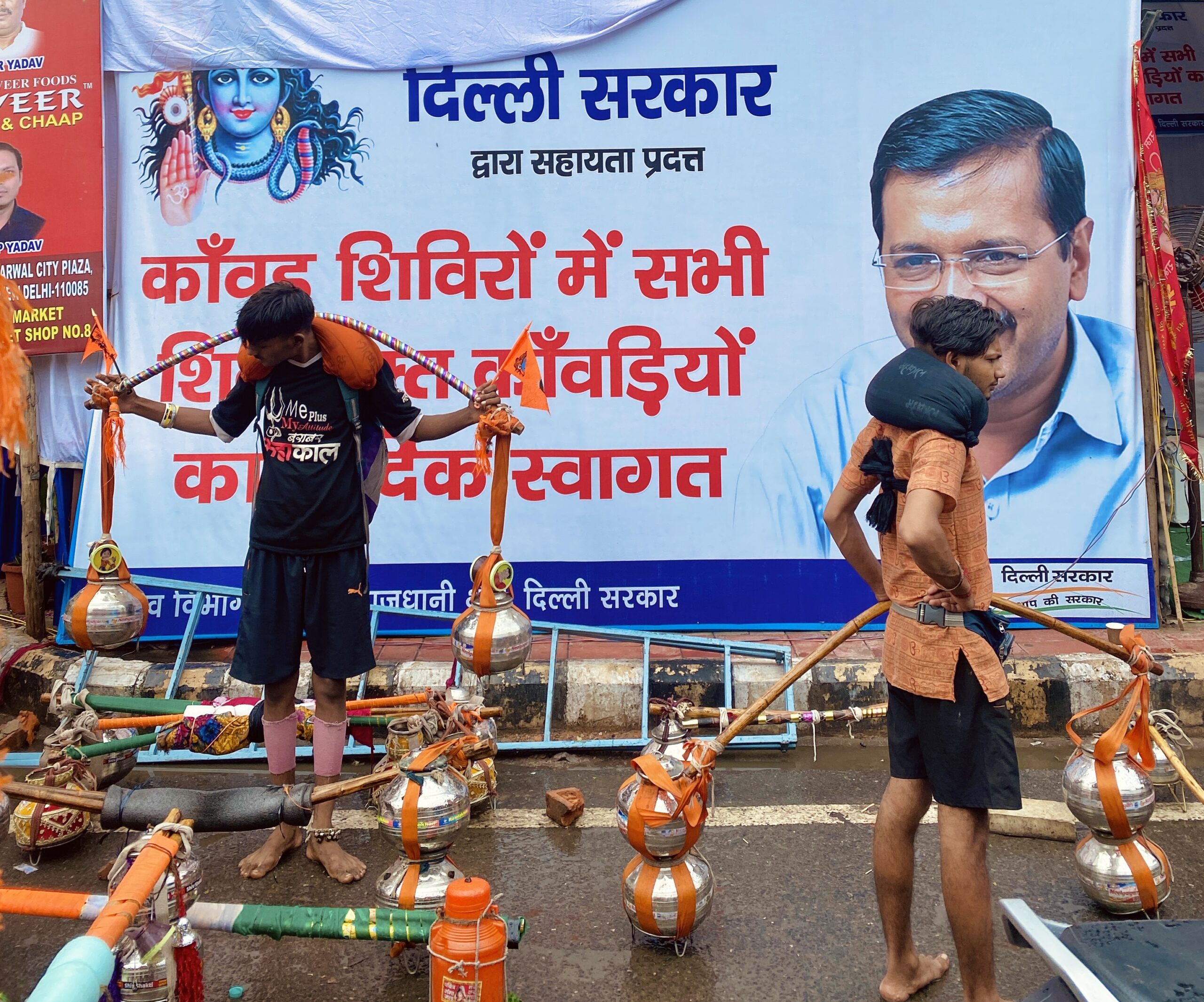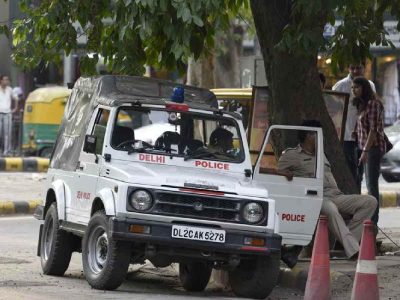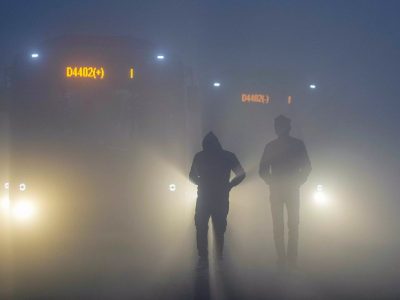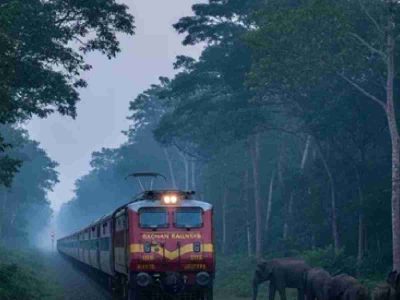As part of the annual Kanwar Yatra, Delhi experiences a substantial influx of Kanwariyas or pilgrims, who pass through the city on their way to Haridwar and other sacred destinations.
The Delhi Government had set up 200 Kanwar camps all around Delhi. In a tweet, Delhi Chief Minister Arvind Kejriwal had said, “Like every year, the Delhi government is organising Kanwar camps across Delhi for Kanwariyas, where they will be provided all facilities.”
The camps set up consisted of temporary structures and tents at designated locations throughout the city. They included essential facilities and services for the Kanwariyas including food stalls, water stations, medical aid centres besides accommodation and sanitation facilities.
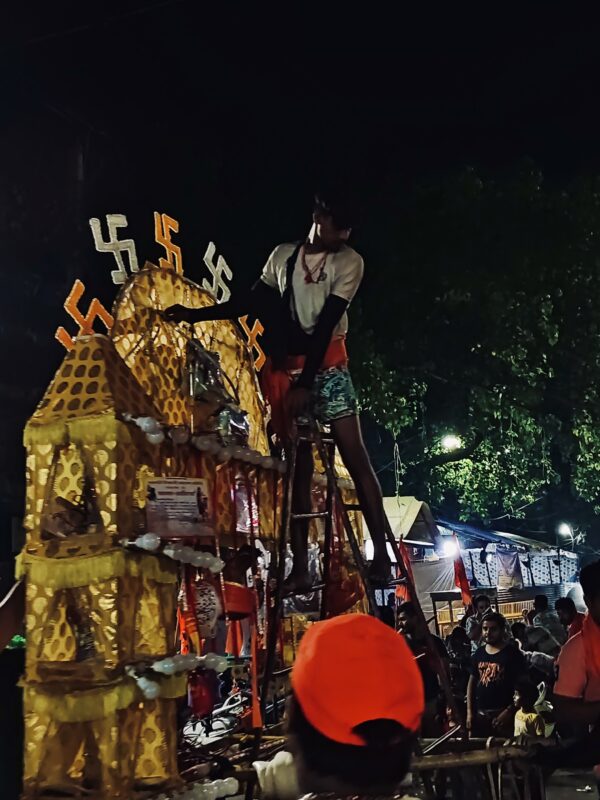
These camps witnessed large crowds of Kanwariyas, dressed in saffron attire, carrying pots on their shoulders. The camps were bustling with activity, with devotees taking rest, performing rituals, interacting with each other, and receiving assistance from camp organisers or volunteers.
The largest Kanwar camp this year was established at Maharaja Agrasen Park in Kashmere Gate. It catered to 10,000 Kanwariyas.
Jitender Garg, one of the organisers of this camp, when asked about the number of kanwariyas participating this year, said, “Kanwariyon ki harr saal badotri hoti hai (
He also highlighted that the government took the initiative to set up camp and deployed sanitation workers and police personnel to ensure its smooth functioning.
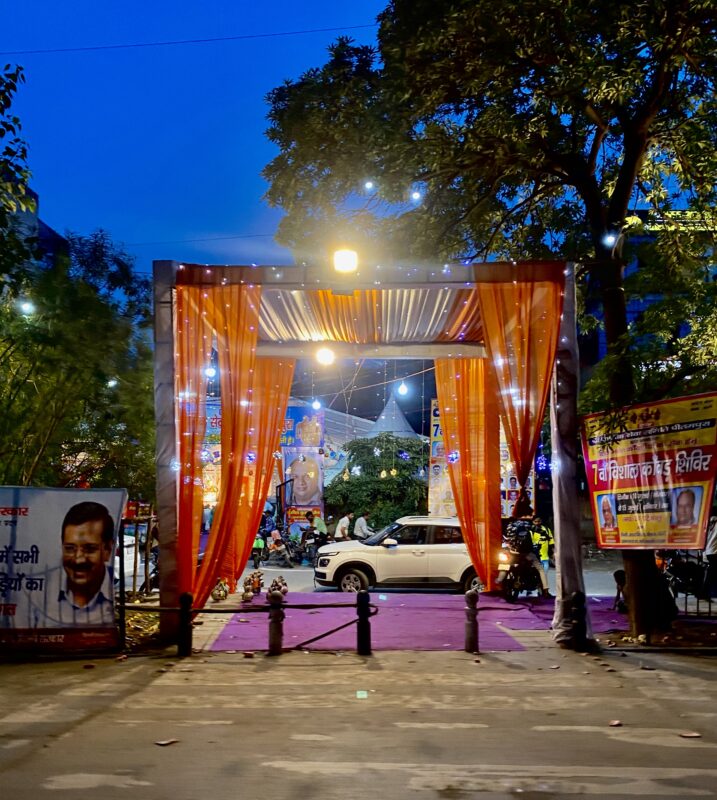
However, all the funds required for additional
“Baaki saare funds hamara
The camp provided round-the-clock food services, offering a wide range of options such as sambhar vada, Ram laddoo, bread pakore, poha, gol gappe, ice cream, and more.
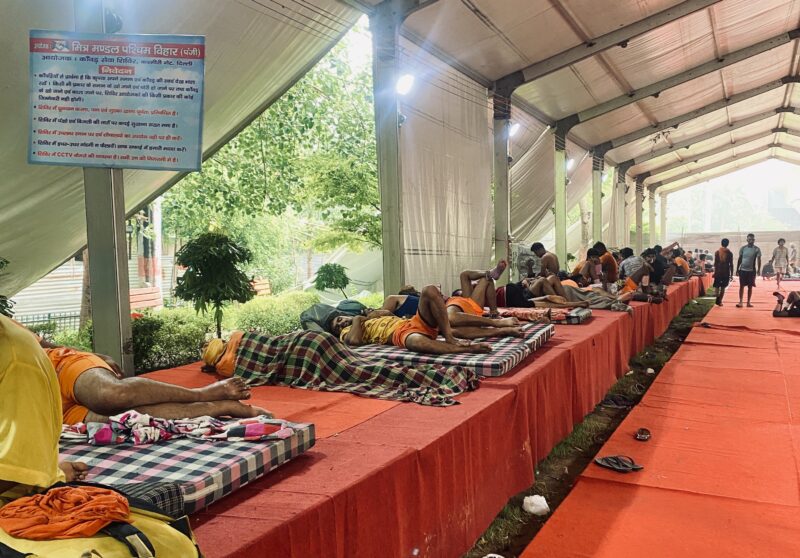
In the districts of East Delhi, North East Delhi, and Shahdara, a total of 85 camps were established, strategically positioned as entry and exit points for the Kanwariyas.
Each camp was equipped with medical facilities, ensuring the presence of doctors and nurses who were available to provide immediate treatment whenever necessary.
A doctor named Arun in one of these camps, said, “Lagataar log aa rahe hain, pareshaani lekar (
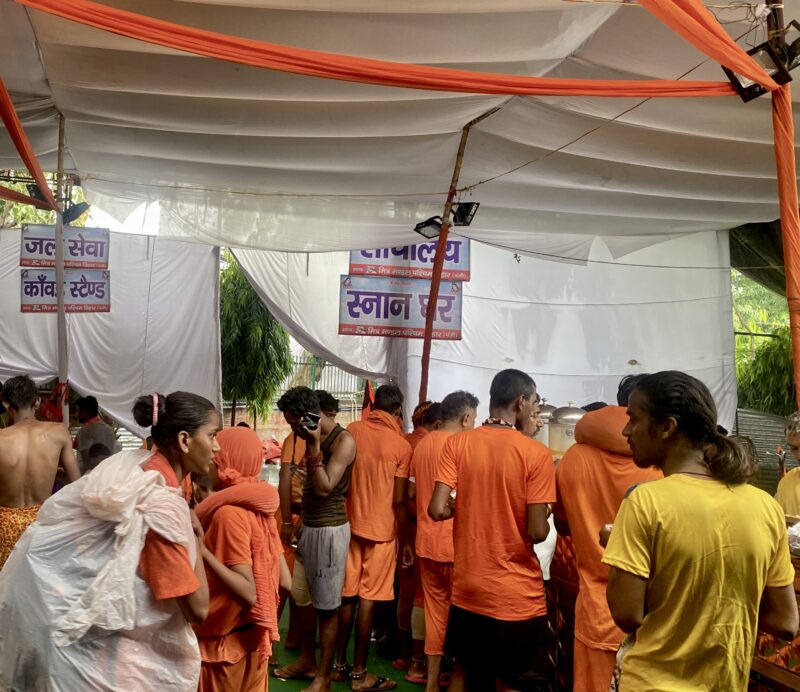
He mentioned that the most common problem faced by Kanwariyas was blisters on their legs. Other discomforts that were reported included stomach-ache, dizziness, fever, and ankle sprains.
As the number of Kanwariyas continues to grow each year, these camps play a crucial role in accommodating and addressing the health needs of the devotees.

